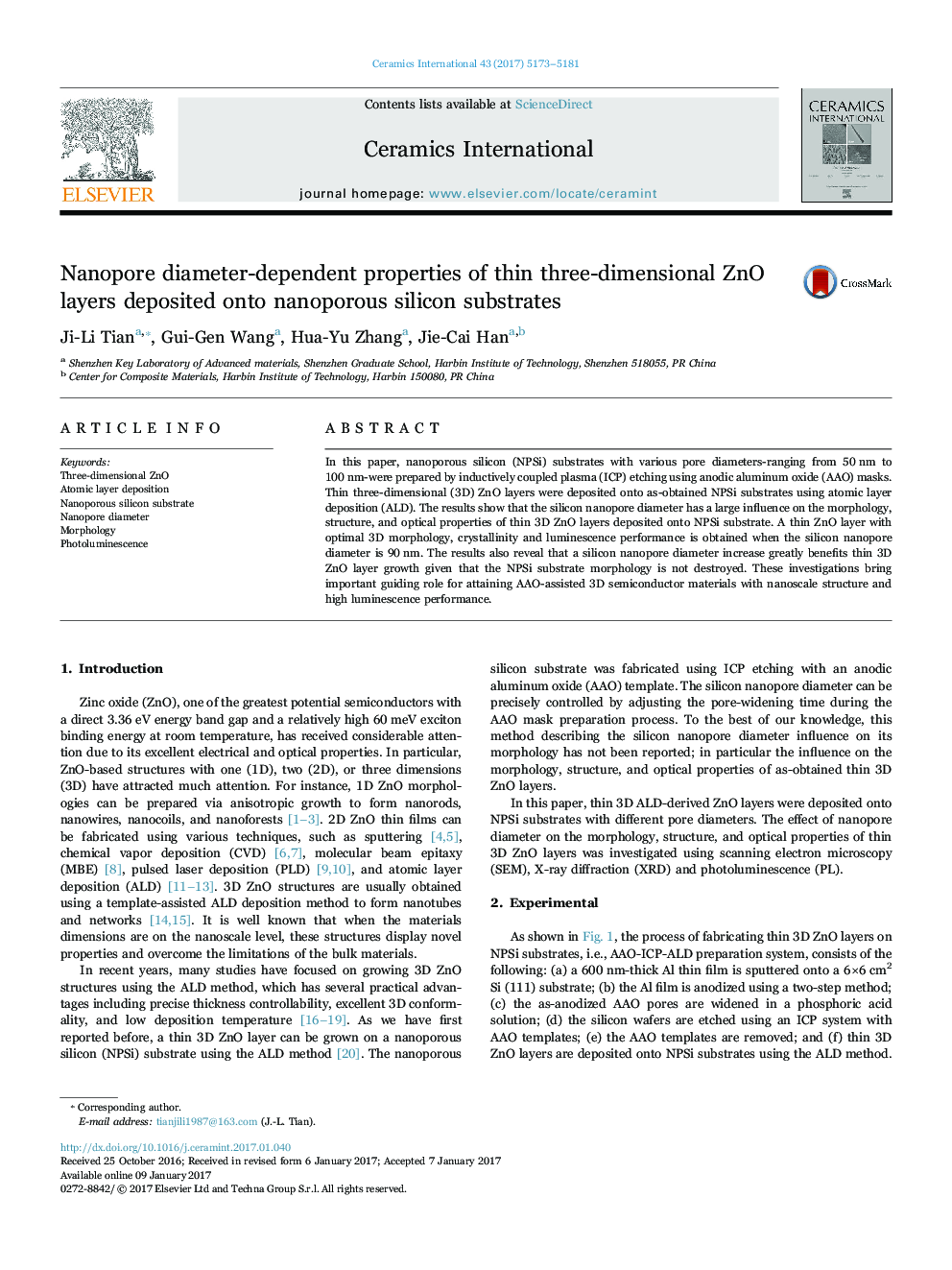| Article ID | Journal | Published Year | Pages | File Type |
|---|---|---|---|---|
| 5438655 | Ceramics International | 2017 | 9 Pages |
Abstract
In this paper, nanoporous silicon (NPSi) substrates with various pore diameters-ranging from 50Â nm to 100Â nm-were prepared by inductively coupled plasma (ICP) etching using anodic aluminum oxide (AAO) masks. Thin three-dimensional (3D) ZnO layers were deposited onto as-obtained NPSi substrates using atomic layer deposition (ALD). The results show that the silicon nanopore diameter has a large influence on the morphology, structure, and optical properties of thin 3D ZnO layers deposited onto NPSi substrate. A thin ZnO layer with optimal 3D morphology, crystallinity and luminescence performance is obtained when the silicon nanopore diameter is 90Â nm. The results also reveal that a silicon nanopore diameter increase greatly benefits thin 3D ZnO layer growth given that the NPSi substrate morphology is not destroyed. These investigations bring important guiding role for attaining AAO-assisted 3D semiconductor materials with nanoscale structure and high luminescence performance.
Related Topics
Physical Sciences and Engineering
Materials Science
Ceramics and Composites
Authors
Ji-Li Tian, Gui-Gen Wang, Hua-Yu Zhang, Jie-Cai Han,
